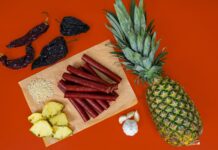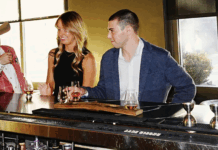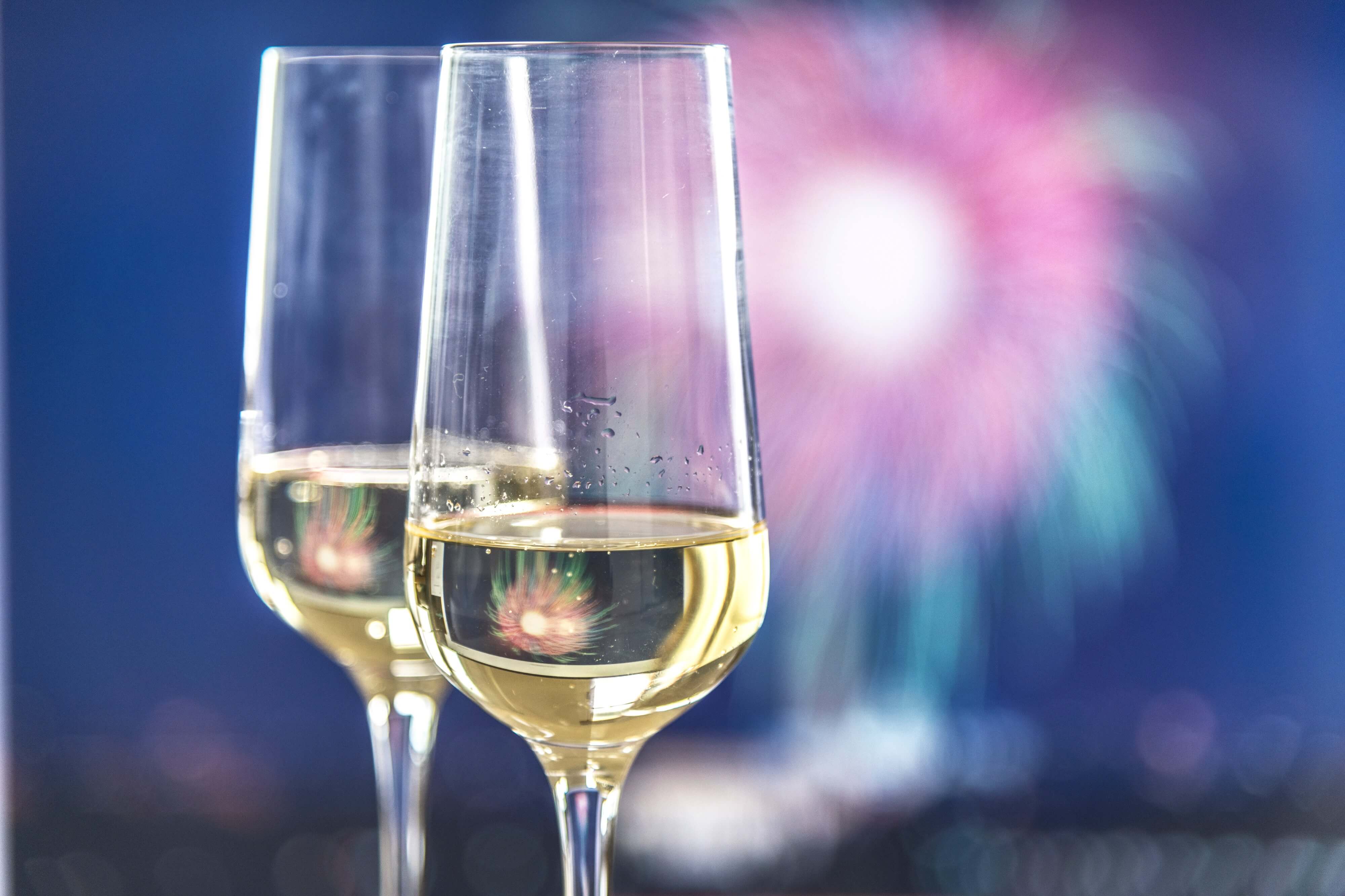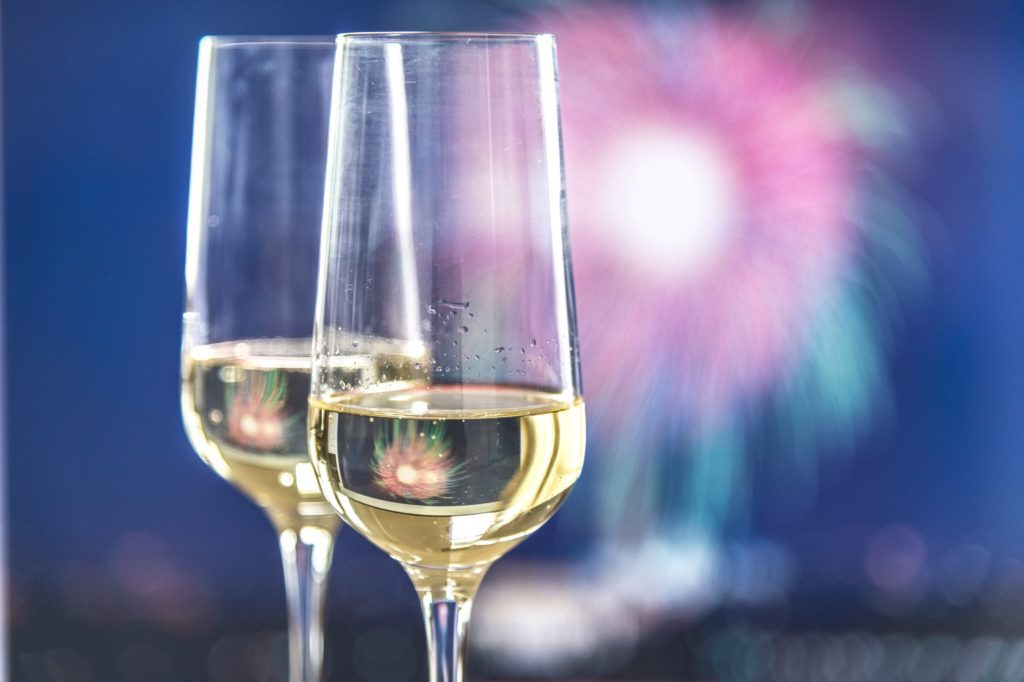Of all the many steps in the evolution of wine glasses, the most salient to today’s wine professionals was the aesthetic leap taken in the 1950s. Starting in 1958, Claus Riedel introduced a series of vessels that were elegant in their simplicity, largely stripped of ornamentation, and—critically—varietally specific.
This was the first time in the history of stemware that a drinking glass was engineered to highlight the nuances of a particular grape variety. Formerly, stemware was aligned exclusively with the aesthetic of the overall tabletop, designs that were typically rather elaborate.
Claus’s grandson, Maximilian Riedel, comments on the transition: “Before we went into specific varietal glasses, we produced fashionable glasses. We worked very closely with companies like Tiffany’s. But in the very early 1950s, my grandfather realized that the trend of art de la table was slowing down. He also had a great passion for wine and realized that beautiful glasses weren’t always the best complement.” The line they debuted in 1958 marked such a break from tradition and proved so revolutionary that a set was acquired by New York City’s Museum of Modern Art (MoMA), where it is currently on display.
Riedel’s aesthetically simple yet functionally complex wine glasses gained in popularity, spurring them to introduce the machine-made Vinum line in 1986. The Vinum line, Riedel’s mouth-blown Sommelier Series, and inexpensive Libby glasses dominated the American restaurant scene as sommelier culture was getting established in the 1970s and ‘80s. Daniel Johnnes recalls, “My first year working in restaurants was 1978, but that was really a tavern. It wasn’t until I got to Plaza Athénée in 1984 that I started using great glassware. And when we opened Montrachet in 1985, we used Riedel. The AP [all-purpose] glass was the Overture red, which was set on every table.”
Johnnes remembers Georg Riedel making the rounds in the 1980s. “He was making a big push in New York, doing all kinds of seminars. They were very compelling performances, and this was right when I was getting serious in the restaurant business.” Riedel’s dedicated consumer and sommelier outreach earned them considerable converts and a lot of loyalty. Per Aldo Sohm, “Riedel didn’t really have any competition for 20 years. They were the main guys in terms of glassware for a long time.”
Sohm grew up in Austria, an hour west of the Riedel factory. He comments, “I came up with those glasses. They put the work and the science into it. There would be no great glasses without the Riedels, and you have to give them full credit for it.” But Riedel’s exclusive grasp could not last forever. The past two decades have seen a growing number of competitors, each with its own point of distinction. Sohm himself represents Zalto, which has won over many sommeliers with its delicate glass (so thin it actually bends!) and attractive, angular shapes. Schott Zwiesel is another contender, set apart through the addition of titanium oxide, which gives the glasses added durability.
Riedel still dominates the market, however, and claims to be the third largest wine glass manufacturer in the world. In response to the increasingly crowded marketplace, the company has doubled-down on specialization and maintained its active educational outreach. “We offer a wide selection to our consumers, of course,” explains Maximilian Riedel, “but behind the scenes, a big part of our business has become customization. A wine region or a big Champagne house or something like this will come to us, and we will work with them to make a special glass.” Their list of private clients includes individual varieties, wine categories (such as rosé), even Coca-Cola, for whom they developed a proprietary glass. With private and commercial products combined, Riedel estimates they currently offer over 700 different glasses.
Riedel’s range is so vast that some companies are deliberately marketing themselves in opposition. “We like to give people a choice but not overwhelm them with choices,” explains Ginger Turner, US distributor for Sophienwald glasses. Sophienwald sells only four pieces of stemware in the country: a white, a Burgundy, a Bordeaux, and a Champagne flute. Gabriel-Glas and MW Jancis Robinson take this model one step further by offering only a single glass. In a similar vein, producers such as Zalto are enjoying success with the “universal glass,” a one-size-fits-all approach to wine drinking.
A limited selection of glassware appeals to both the easily overwhelmed and the spatially lacking—apartment dwellers and many restaurants, for example. It also raises the topic of standardization. If indeed glass shape has a dramatic impact on the sensory impression of a wine, then it logically follows that critics and professional tasters ought to stick to one type of glass when evaluating wines. Wine critic James Suckling is famous for carrying his custom-designed Lalique stems with him wherever he goes. And back in 1970, the INAO addressed this topic through the creation of the ISO standard tasting glass. This glass, pictured here, is as simple and utilitarian as one might imagine; useful, perhaps, for massive industry tastings but unlikely to grace the table of any real wine lover.




















![Get Your Indie Movie Made (Responsibly): Jeff Caruso of Wrapbook Leads the AFM 2025 Film Finance Conversation [Exclusive Interview] American Film Market](https://dailyovation.com/wp-content/uploads/2025/11/AmericanFilmMarket2025-1-218x150.jpg)













